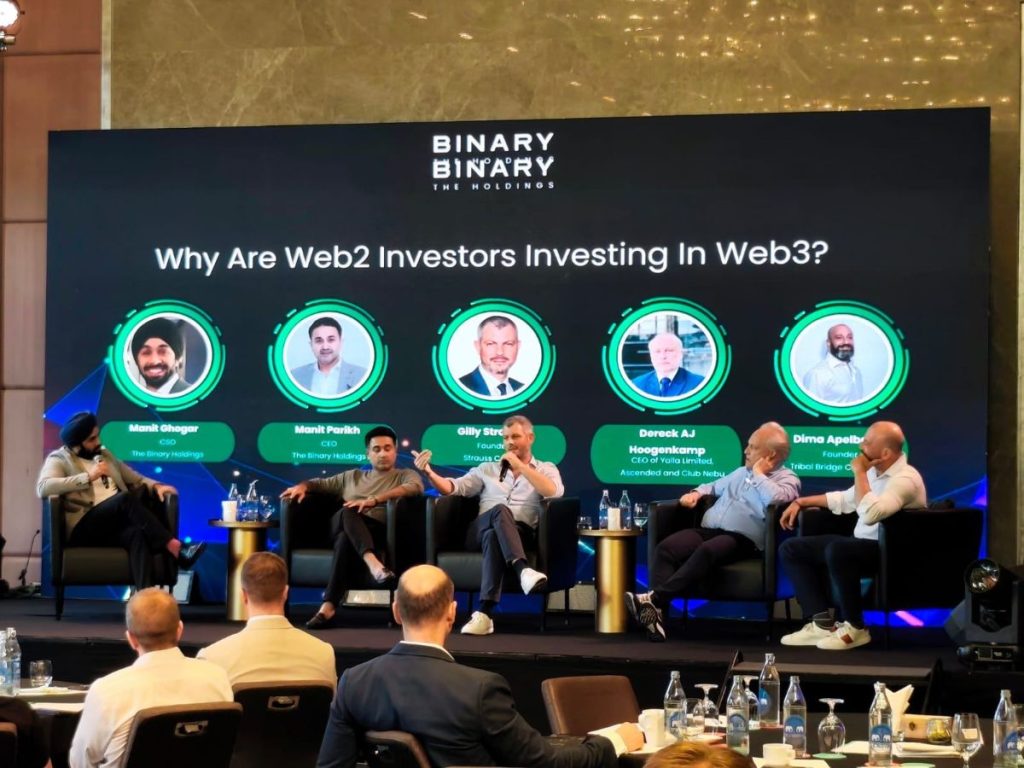Telcos and Loyalty Points Could Drag Millions of Web2 Users Into Crypto—Whether They Like It or Not
Bangkok’s Binary Summit bets big on telecom partnerships and points programs as the backdoor to mass adoption. Because nothing says ’decentralized revolution’ like your mobile carrier shilling tokenized air miles.
Key strategy: Leverage existing Web2 infrastructure to onboard normies. Telcos get cut of transaction fees, users get ’free’ NFTs—everyone wins (except maybe those pesky ideals of self-custody).
The playbook? Turn every Starbucks reward point into a Trojan horse for blockchain. After all, if 2008 taught us anything, it’s that financial innovation works best when wrapped in something familiar—and just as exploitative.
But What Exactly is TBH Building?
At its core, The Binary Holdings is creating a Web3 infrastructure LAYER that plugs directly into Web2 ecosystems—primarily mobile networks and financial services. The company’s loyalty engine allows app developers and businesses to offer users real-time rewards in the form of native tokens, which can then be redeemed for services within a broader partner ecosystem. Parikh told Cryptonews:
“We’re creating a frictionless loyalty system where time and attention—not just spending—generate value. In Southeast Asia, mobile-first users don’t want to wait months to redeem points. They want rewards now, and they want them to matter.”
Chain Abstraction and the “Web2.5” Middle Ground
While the summit’s tone was unmistakably bullish, the panels also leaned into realism—specifically around user onboarding challenges in crypto. A key talking point that echoed through multiple sessions was the emergence of a “Web2.5” strategy, a concept referring to Web3 backend architecture with a Web2 front-end experience.
Parikh explained that while chain abstraction—the ability to hide complex blockchain interactions from end-users—is crucial, it’s just one piece of the puzzle.

“At TBH, we’re embedding Web3 utility within everyday mobile and financial experiences,” he said. “Our users don’t need to know they’re interacting with crypto to benefit from it.”
That sentiment was echoed by several participants who noted that the average consumer in emerging markets isn’t looking for a DeFi protocol—they’re looking for usable, rewarding apps that make life simpler.
“We’ve focused on building consumer-ready dApps that are intuitive, fast, and purpose-driven—whether it’s earning rewards, playing games, or accessing financial services,” Parikh added.
Telcos as Web3 Gateways?
One of TBH’s more distinctive strategies lies in leveraging telecommunication giants as distribution rails. According to Parikh, legacy enterprises—especially telcos—are “perfectly positioned to be Web3’s biggest onramps.”
“They have scale, trust, and user bases in the hundreds of millions. But what they’ve lacked is infrastructure that feels native and easy to adopt. Web3 doesn’t need to replace them—it needs to empower them.”
The integration is pitched as beneficial for both parties: telcos and consumer apps can drive higher ARPU (Average Revenue Per User) and unlock new revenue streams through tokenized services, while users get more engaging digital experiences without even realizing it’s all running on-chain.
A Nightcap Hinting at More
As the panels wrapped up and the networking began, guests moved into an open-air lounge for the evening’s closing celebration. With champagne flutes in hand and Thai street food-inspired canapés making the rounds, Parikh teased at some major partnerships on the horizon and gave investors a sneak peek at a prototype product—one that, if whispers around the room are to be believed, could ruffle feathers among both Web2 giants and Web3 purists alike.

